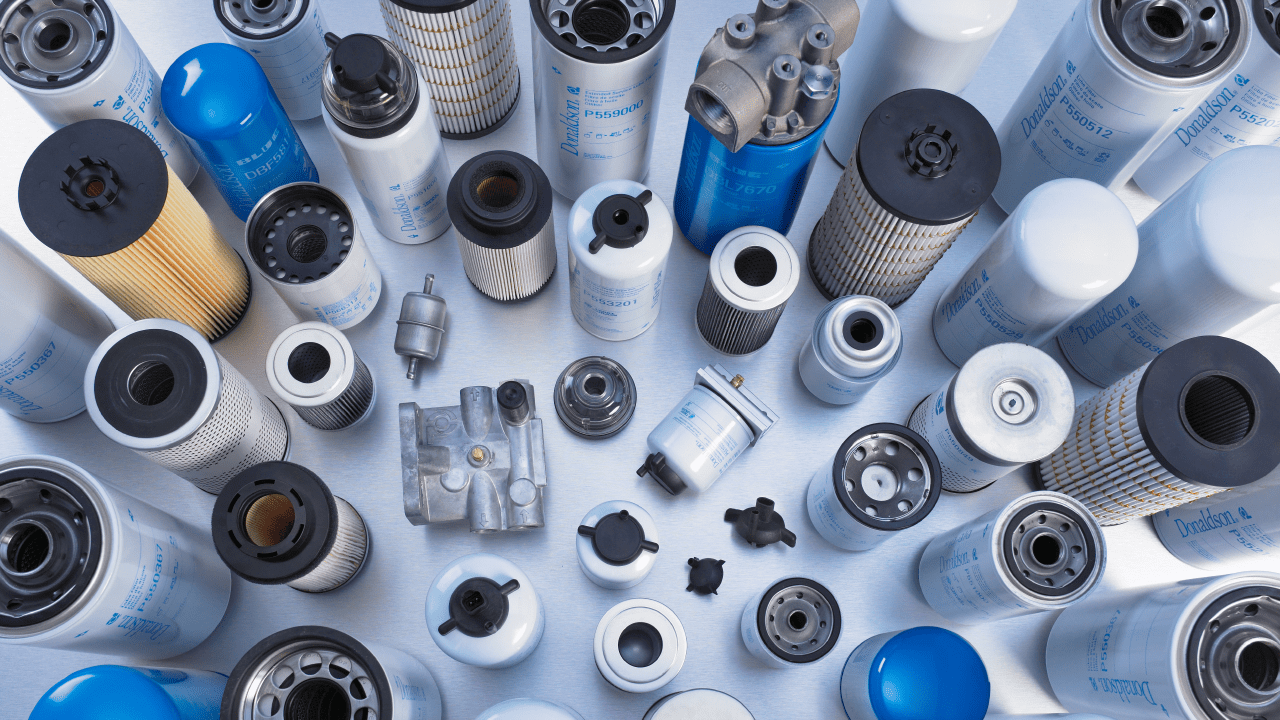Shop Menu
🚀 5% OFF Your First Order. Use Code FIRSTORDER5 🚀
What do Filters in Your Hydraulic System Do?

In a hydraulic system, every filter performs an important function. In a perfect hydraulic system, the oil would be filtered at every stage along the circuit, before and after entering every component. The reality is cost, physical space and the need to reduce pressure on the system limit how many filters a machine can efficiently accommodate. Manufacturers design their systems to be as efficient and as cost-effective as possible.
That can mean some tough decisions about where to include filtration. The extent of filtration depends on:
- The cleanliness requirements and sensitivity of the components
- Ambient contamination
- The duty cycle of the equipment
- Ease of servicing components and replacement parts
- Other variables vary from application to application.
- The tolerance between components (working pressure of the system)
Which type of filters are included in your hydraulic system?

Suction strainers: Typically found in the hydraulic fluid tank, their only real use is to keep insects, nuts and bolts, and other large, visible contaminants (150 micron+) out of the pump. One could argue that the need for suction strainers could be eliminated by simply pre-filtering hydraulic fluid. This in turn keeps the reservoir sealed and uses a TRAP breather.
However, even a small chance that large objects could find their way into a hydraulic reservoir makes the low cost of a suction strainer worth it. It could prevent extensive damage to an expensive hydraulic pump (not to mention the cost of downtime for the equipment owner). In a few instances, the suction strainer also helps to prevent air bubbles from entering the hydraulic circuit.
Low pressure or suction filters: Suction filters are normally spin-on filters placed between the reservoir and the pump and are designed to protect the pump from harmful contaminants. They are easier to service and less expensive than many other types of filters. However, to prevent restriction of the pump’s suction line, which could cause cavitation, suction filters tend to be substantially more open (larger micron size) than other “return” or “pressure” filters with the same flow rating.
High-pressure filters: These cartridge-style filters clean fluid downstream of the pump, protecting expensive components such as servo valves and actuators. High-pressure filters protect the most expensive components in the circuit in case of a catastrophic pump failure and therefore are the most critical filter (or best ROI) in the circuit. They are found in applications across most industries, from tractors to construction and mining equipment to forestry.
One disadvantage of high-pressure filters is, ironically, the high pressure. Housings for these filters must withstand pressures of 450 bar/6,500 psi. This is so they can be heavy-duty cast iron, difficult to handle and cumbersome to service. Unless a duplex configuration is used and strict safety practices are followed, the entire hydraulic system must be shut down to service a high-pressure filter.
If you own machinery, you likely own hydraulic filtration
The machine in front of you in your workshop could feature all or some of the above filter types. It is important that every owner and user of machinery with built-in hydraulic systems understand the vital preventative function of filtration. This includes regular maintenance and servicing to ensure that much more expensive components are not damaged by poor filtration. Specifying high-quality hydraulic filters — in line with the manufacturer’s individual recommendations for that machine. It’s not just best practice; it is usually the more economical choice for the equipment owner.
If you have any questions regarding choosing hydraulic filters, please get in touch with us or a Donaldson expert.
– Article Credit: Donaldson Filters
